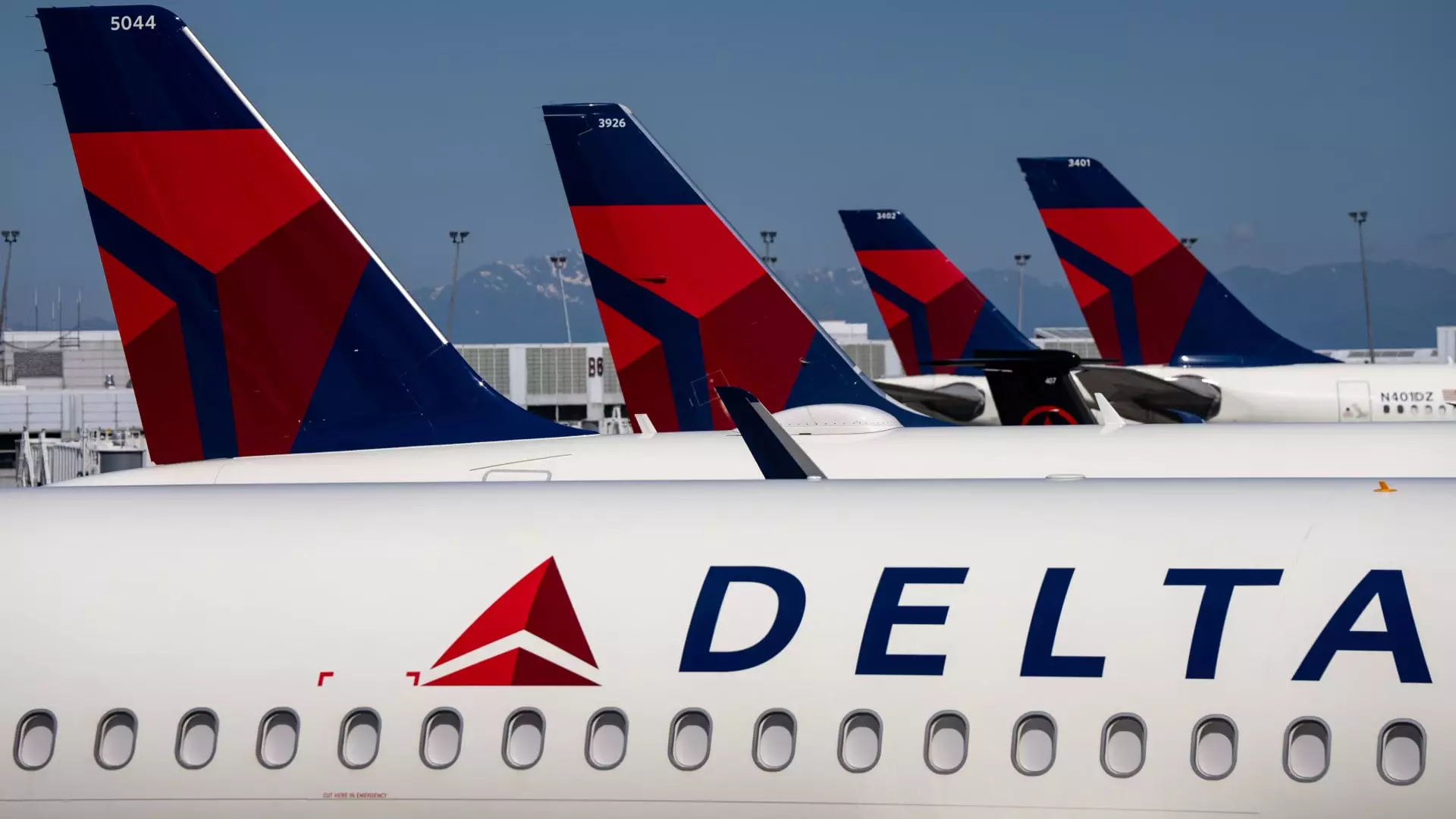Delta Air Lines’ recent announcement to considerably downgrade its profit forecasts serves as a glaring signal of instability within the airline industry. The company, once viewed as a reliable bellwether for sector health, anticipates only a meager 5% revenue increase in the first quarter, down from earlier estimates of 6% to 8%. While these numbers might superficially seem modest, they reveal a more dire scenario for an industry that had been gradually recovering post-COVID. The looming specter of weak domestic demand raises questions: How sustainable is the travel industry’s rebound?
Consumer Confidence: The Canary in the Coal Mine
Delta’s CEO, Ed Bastian, has candidly pointed to dwindling consumer confidence as a primary factor behind the anticipated slump. Conditions in the economy can shift quickly, and it appears that both leisure travelers and business professionals are pulling back on their bookings due to instability and uncertainty. When consumers falter in a sector as critical as air travel, it appears we are not just witnessing the fallout from isolated incidents—like the recent midair collision and a close call during a landing in Toronto—but rather a collective sentiment that prioritizes safety, coupled with economic frustration. In this context, it is hard not to view Delta’s forecasting cuts as a symptom of broader behavior patterns.
Market Reaction: A Harbinger of A Downward Spiral
The 13% drop in Delta’s stock after the announcement is emblematic of larger market fears. Historically, airline stocks have been notoriously volatile, but a collective dip suggests a growing anxiety among investors that the travel industry’s recovery may be stunted—at least in the short term. The ripple effect from Delta’s waning forecasts could potentially induce a domino effect across other airlines, as competitors scramble to address their own domestic demand issues. The interconnectedness of the industry means a single airline’s struggles can resonate through to others, creating a shared vulnerability that seems to contradict the resilience displayed in previous pandemic recoveries.
Looking Ahead: Risks vs. Opportunities
Despite the grim outlook, forces remain at play that could spur a resurgence in demand. Delta reported that growth in premium travel and international routes still aligns with expectations. This could signal opportunities for airlines that can pivot quickly to adapt to shifting travel desires. The upcoming JPMorgan airline industry conference may provide a platform for speculation about strategies to reengage consumers. Ultimately, innovation and a return to safety-first practices may define which airlines navigate the current landscape successfully.
Crisis Management and the Way Forward
Adapting to a new market reality will require far more than just reactive measures; airlines must engage in proactive crisis management. Safety communications should be at the forefront of marketing strategies, addressing travelers’ apprehensions openly to restore confidence. The future may well hinge on the industry’s ability to not just weather this storm, but thrive by repositioning itself—to prioritize safety, transparency, and consumer welfare as pillars of their business strategies. As Delta grapples with these challenges, it creates a cautionary tale worth heeding in the broader travel sector, where complacency could pave the way for turbulence ahead.

